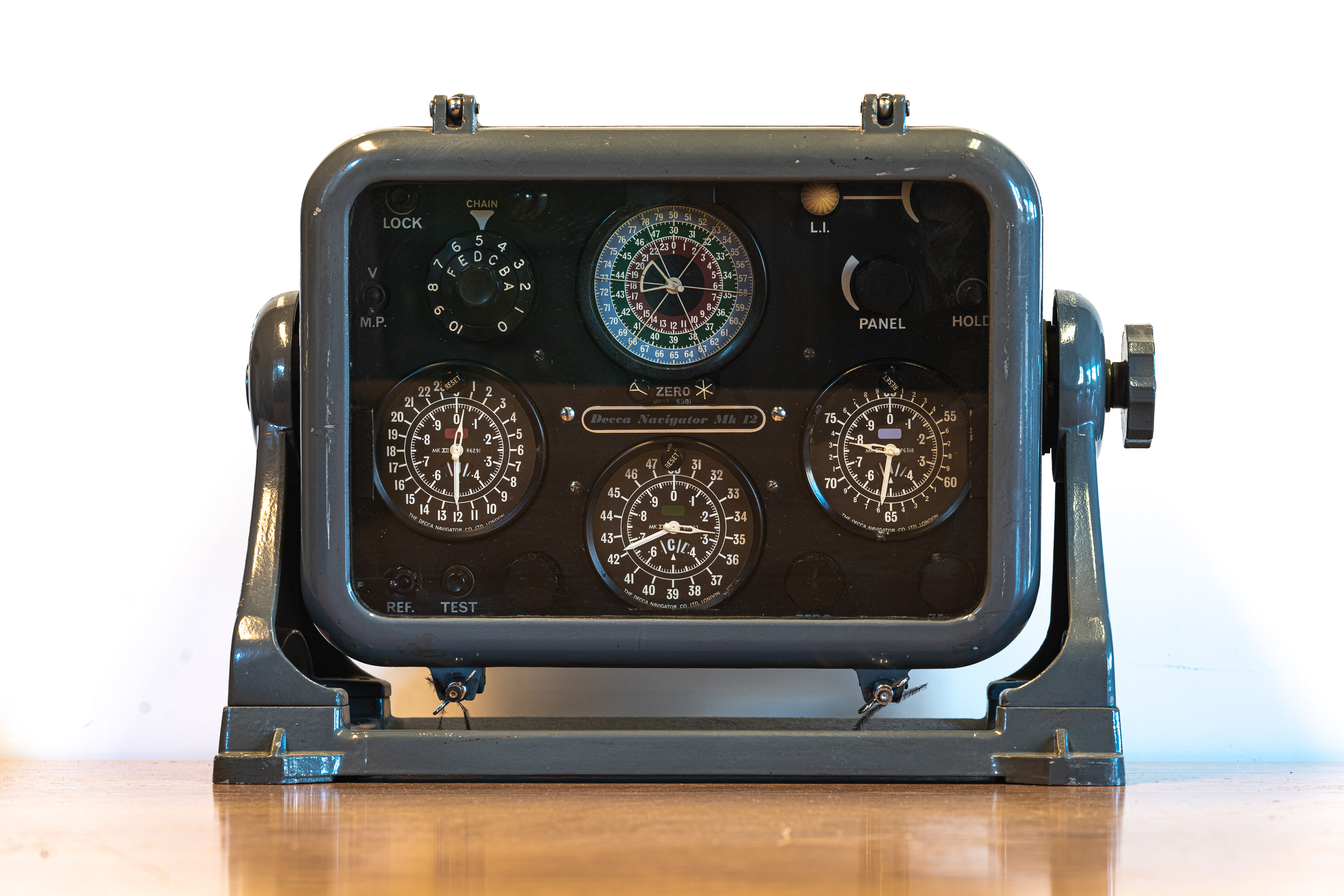 |
Decca Navigator Mk xii#Radio Navigation
|
|
|
Date: c. 1965 Catalogue #: Donation record:
|
The Decca Navigator System is a hyperbolic radio navigation system which, although promoted by two American citizens, was developed during WWII and later used in many areas around the world. In 1941, the Admiralty, looking forward to eventual landings in France and the need for accurate navigation, started taking an interest in Decca and organised a trial off of Anglesey in mid-1942. It was highly successful and resulted in Decca proceeding with further work with assistance from the Admiralty signals establishment. Decca operated by measuring the phase differences between continuous signals from a master and slave stations. These differences were then related to hyperbolic lines printed on a chart. By plotting the readings from two pairs of hyperbolas at any particular instant, users could plot their position instantly.
The above shows the Decca hyperbolic lattice and how the Decometers presented their readings. Image taken from 'The Genesis of the Decca Navigator System' by Walter Blanchard, Journal of Navigation 68 no. 2 (2015) The Mark XII unit pictured above was released on 1962 Nov 27, 1962. It supported both Multipulse and Mk. 5 Lane Identification in order to work with all chains. The receiving antenna for the Mk 12 style of receiver, fitted to the bulkhead or building wall, was normally a 3 part fiberglass tube with a single wire inside with an overall length of roughly 15 to 18 feet. The decometer displays and power unit were separate to the receiver. |

